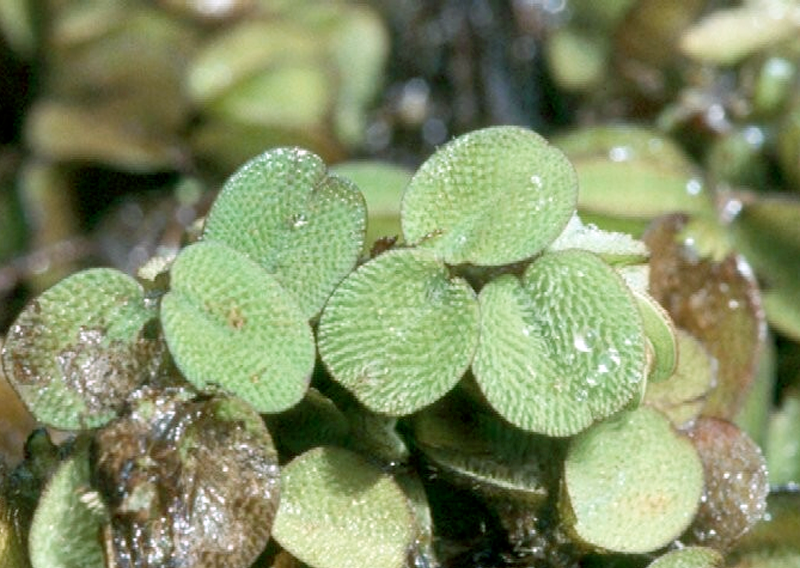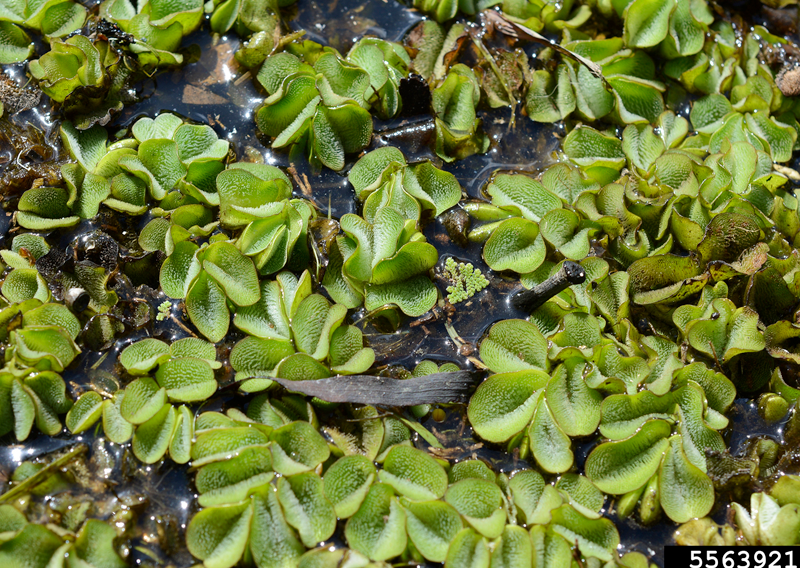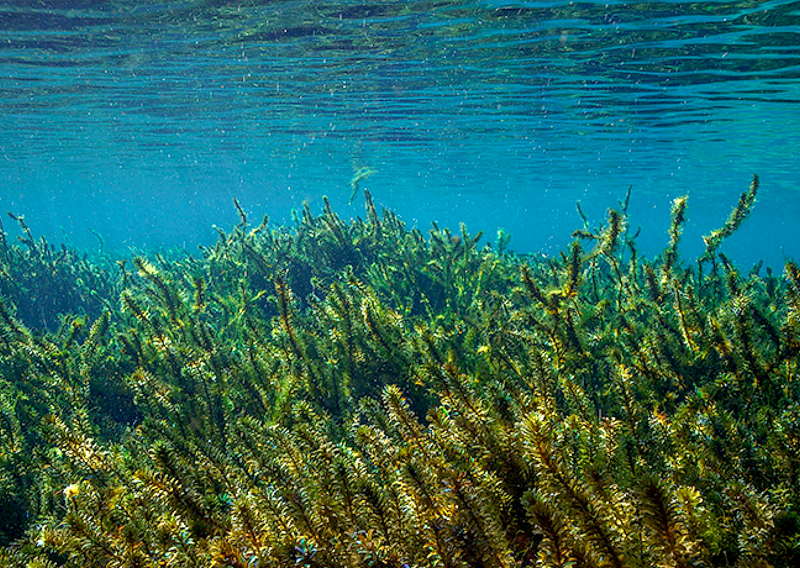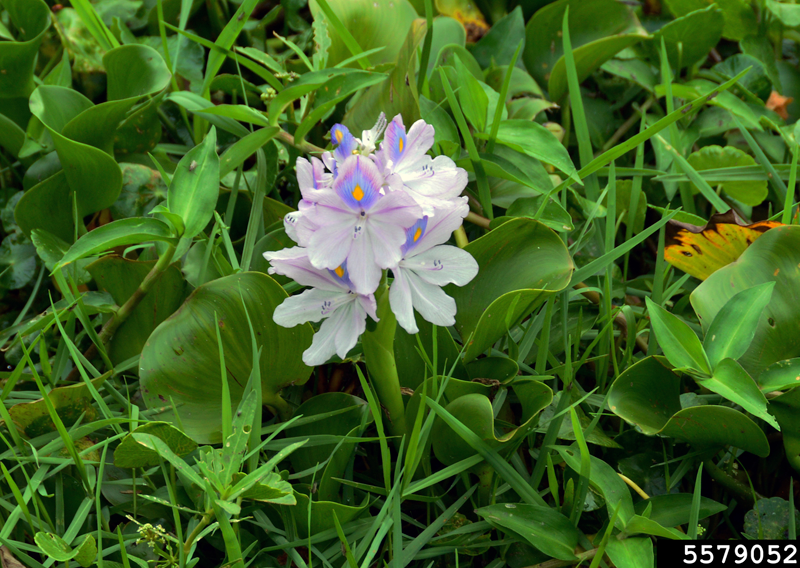Alligator Weed (Alternanthera philoxeroides)
Origin and Date of Introduction: Argentina; 1897.
Pathway / Media: Ballast water.
Reason for Introduction: Accidental, to Mobile, Alabama.
Preferred Habitat: Slow-moving fresh and brackish water.
Ecological / Economic Damage: Degrades habitat and causes navigation difficulties.
Control Options: Manual/mechanical removal; herbicides; biocontrol insects. Alligator weed usually forms sprawling mats in calm waters and along shorelines, but may also be found on land. Here, the invasive plant spreads into a lagoon in Audubon Park, New Orleans, site of the introduction of water hyacinth as an ornamental plant at an 1884 world’s fair.

Photo: Shaun Winterton, Aquarium and Pond Plants of the World, Edition 3, USDA APHIS PPQ, Bugwood.org
Futher Reading: USDA National Invasive Species Information Center
Common Salvinia, "Water Spangles" (Salvinia minima)
Origin and Date of Introduction: South America; unknown.
Pathway / Media: Waterways and wind currents; boats and birds.
Reason for Introduction: Accidental.
Preferred Habitat: Slow-moving fresh waters.
Ecological / Economic Damage: Degrades habitat.
Control Options: Herbicides, mechanical control, possibly biological control by insects. Dense mats of common salvinia can deplete dissolved oxygen in Louisiana’s bayous and swamps, causing fish kills.

Photo: C. Jacono, USGS Nonindigenous Aquatic Species
Futher Reading: USGS Nonindigenous Aquatic Species
Giant Salvinia (Salvinia molesta)
Origin and Date of Introduction: Brazil; 1998.
Pathway / Media: Waterways; aquaculture (ornamental ponds and aquariums).
Reason for Introduction: Deliberate, followed by accidental spread.
Preferred Habitat: Slow-moving fresh waters.
Ecological / Economic Damage: Degrades habitat and impedes navigation.
Control Options: Manual / mechanical removal; herbicides; biocontrol insects (Australian imported weevils). In October 2001, Australian imported weevils were released as potential biocontrol agents for giant salvinia at four sites in Texas and Louisiana, including the Toledo Bend Reservoir.

Photo: Shaun Winterton, California Department of Food and Agriculture
Futher Reading: USDA National Invasive Species Information Center
Hydrilla (Hydrilla verticillata)
Origin and Date of Introduction: Asia; early 1950s.
Pathway / Media: Waterways and transportation corridors; aquariums, boats and trailers.
Reason for Introduction: Deliberate, followed by accidental spread.
Preferred Habitat: Slow-moving waters.
Ecological / Economic Damage: Degrades habitat, blocks water flow, impedes navigation and water intake.
Control Options: Manual / mechanical removal, water-level drawdowns, biocontrol insects. Hydrilla plagues lakes throughout Acadiana, forcing the state to drain Henderson Lake in St. Martin Parish in an attempt to control the fast-growing Asian aquatic plant.

Photo: Isaac Szabo, University of Florida, Center for Aquatic and Invasive Plants
Futher Reading: USDA National Invasive Species Information Center
Water Hyacinth (Eichhornia crassipes)
Origin and Date of Introduction: South America; 1884.
Pathway / Media: Waterways; nurseries and ornamental ponds.
Reason for Introduction: Deliberate; used as ornamental for 1884 World’s Industrial and Cotton Exposition in New Orleans.
Preferred Habitat: Wetlands and calm waterways.
Ecological / Economic Damage: Obstructs waterways, decreases biodiversity, creates breeding habitat for mosquitoes.
Control Options: Manual/mechanical removal, herbicides, biocontrol insects. Water hyacinth mats may double in size within one to two weeks, clogging waterways, diminishing oxygen in the water, and excluding native aquatics.

Photo: William M. Ciesla, Forest Health Management International
Futher Reading: USDA National Invasive Species Information Center

